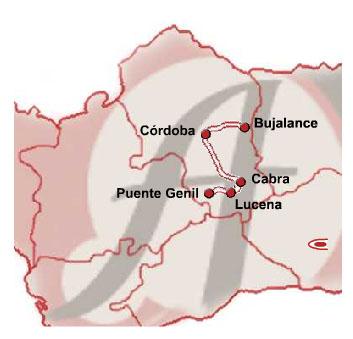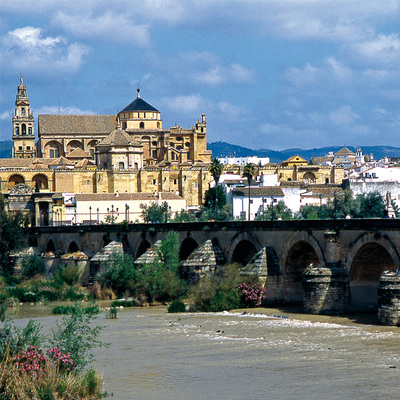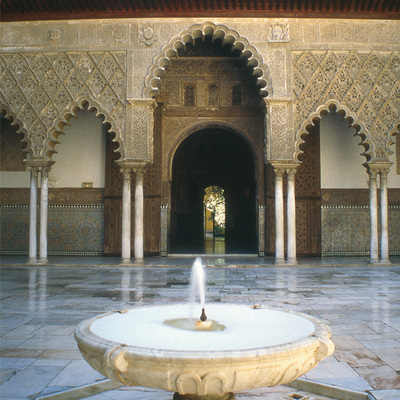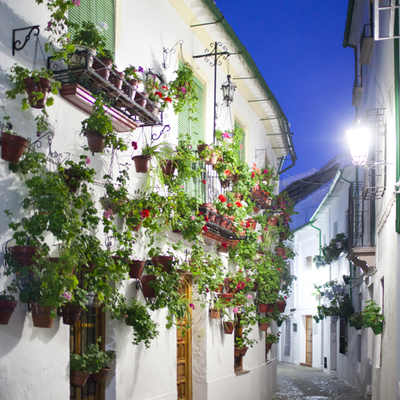The Cayetano Route: Abandolaos Songs
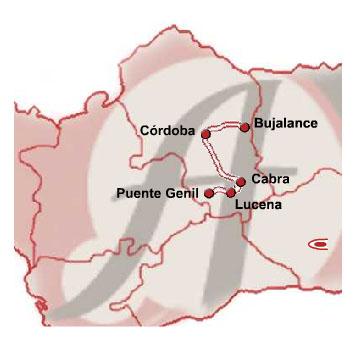
In order to discover the path taken by Cayetano Muriel, known as the Niño de Cabra, we must go to Bujalance. In this town district the Pajarona is performed. This is a singing style where one singer is answered by another, some distance away, both of them carrying a yoke to symbolize ploughing the land. Various folk groups from the area perform this relic from the past for visitors to Porcuna, Montilla and Puente Genil, where the serrana is also performed. The mixture of these melodies is justification enough for starting out on this path, at the end of which we will find another of the fundamental branches of flamenco: the abandolaos songs.
Its geographic location between Cordoba and Seville, and its historic tradition of trade - starting with its quince jelly factories - have made Puente Genil an attractive location for artists. Melodies reached the town from the Ronda Mountains, passing through Genil, where the rondeña was transformed into the zángano. However, we have to go back to the times of José Bedmar El Seco to find the first points of reference for visitors. What exactly is the zángano de Puente Genil? Although as a genre it is simply another of the fandangos from the area, its melodic features give it its own identity, as well as its own kind of dance. This can be seen in the entrance way of the flamenco association, where a painted tile in memory of Antonio Fernández Díaz "Fosforito" bears the following words: "Land where I was born / I will never forget you / land where I was born / and though I am far from here / you are in my heart / village of Puente Genil". This verse was recorded by the above-mentioned Fosforito, with Paco de Lucía on guitar, for the Belter record company in the 1960s. However, the best way to appreciate fully the mysteries of the local fandango is to see the "Zángano Folk Group" from Puente Genil, which captures the area's entire popular artistic heritage with great attention to detail.
The most important town in the region, as regards flamenco singing, is Lucena. Here you can hear at least three different types of local fandango. Dolores de la Huerta is the creator of at least two of them, while Rafael Rivas is accredited with the style also known as the Calle Rute. Take a look at the lyric from Lucena sung by Niño del Museo, another renowned old flamenco singer: "I have come to see you / little virgin of Araceli...". These lines provide the key to the inspiration for creating songs in this place: the Araceli Festival. The Church of El Carmen and Moral Castle, where Boabdil was kept prisoner in around 1483, are two other places not to be missed if you want to get a real impression of Lucena's long history and its importance in studying its musical heritage. A visit to the "The pearl of the Sepharad", as the city was known as in medieval times, must also take in its flamenco association, the Sierra de Aras mountain peak, where the shrine to María Santísima de Araceli stands, and San Mateo Church. A single glance at these sites explains why Lucena has contributed so much to the "deep art" of flamenco. The same can be said of Cabra, the cell that underlies of the wealth of abandolao singing in Cordoba, thanks to the legendary figure of Cayetano Muriel. The house where he was born is still standing and has a commemorative painted tile.
The city of Cordoba has been a refuge for the great flamenco singers of history. This can be seen simply by entering the Plaza del Potro Square and looking in each direction. On one side, in Armas street, José Reyes Maldonado has his guitar workshop. Instruments made here have been played by masters like Paco de Lucía, Manolo Sanlúcar and Vicente Amigo.
On the other side, the courtyard of the Silversmiths' Society is full of flowers and lined with posters and photographs of artists. Local singers perform here. In July, during the Guitar festival, it is one of the best places to find good flamenco every day. A few metres away stands the famous Bodegas Campos restaurant. Decorated with bullfighting posters from Cordoba, it is closely linked with the history of the masters of flamenco singing.
The Jewish quarter hides surprises in every corner, such as Casa Santos, a tavern famed for its great Spanish omelettes. Here there are photographs and posters of El Pele, Luis de Córdoba, Fosforito, Curro de Utrera, Antonio Ranchal, Antonio de Patrocinio, El Calli and of many other masters from Cordoba. The famous Las Tendillas clock marks the hours with seguiriyas played by Juan Serrano on the guitar. There are many flamenco clubs in this area, as it is near the Gran Teatro Theatre, which hosts the National Flamenco Competition once every three years. Musical curiosities from Andalusia are also to be found in Plaza de la Corredera square in the summer, and on Gran Capitán Avenue.

